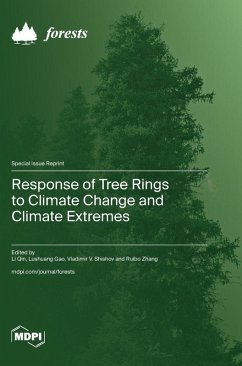
Prehistoric Native Americans and Ecological Change
Human Ecosystems in Eastern North America Since the Pleistocene

PAYBACK Punkte
60 °P sammeln!
Short description/annotationDemonstrates the importance of prehistoric human activities in the ecology of eastern North America, and its implications for conservation today.Main descriptionThis book shows that Holocene human ecosystems are complex adaptive systems in which humans interacted with their environment in a nested series of spatial and temporal scales. Using panarchy theory, it integrates paleoecological and archaeological research from the Eastern Woodlands of North America providing a new paradigm to help resolve long-standing disagreements between ecologists and archaeologists ab...
Short description/annotation
Demonstrates the importance of prehistoric human activities in the ecology of eastern North America, and its implications for conservation today.
Main description
This book shows that Holocene human ecosystems are complex adaptive systems in which humans interacted with their environment in a nested series of spatial and temporal scales. Using panarchy theory, it integrates paleoecological and archaeological research from the Eastern Woodlands of North America providing a new paradigm to help resolve long-standing disagreements between ecologists and archaeologists about the importance of prehistoric Native Americans as agents for ecological change. The authors present the concept of a panarchy of complex adaptive cycles as applied to the development of increasingly complex human ecosystems through time. They explore examples of ecological interactions at the level of gene, population, community, landscape and regional hierarchical scales, emphasizing the ecological pattern and process involving the development of human ecosystems. Finally, they offer a perspective on the implications of the legacy of Native Americans as agents of change for conservation and ecological restoration efforts today.
Table of contents:
Acknowledgements; Part I. Panarchy as an Integrative Paradigm: Overview; 1. The need for a new synthesis; 2. Panarchy theory and Quaternary ecosystems; 3. Holocene human ecosystems; Part II. Ecological Feedbacks and Processes: Overview; 4. Gene-level interactions; 5. Population-level interactions; 6. Community-level interactions; 7. Landscape-level interactions; 8. Regional-level interactions; Part III. Application and Synthesis: Overview; 9. The ecological legacy of prehistoric Native Americans; References; Index.
Demonstrates the importance of prehistoric human activities in the ecology of eastern North America, and its implications for conservation today.
Main description
This book shows that Holocene human ecosystems are complex adaptive systems in which humans interacted with their environment in a nested series of spatial and temporal scales. Using panarchy theory, it integrates paleoecological and archaeological research from the Eastern Woodlands of North America providing a new paradigm to help resolve long-standing disagreements between ecologists and archaeologists about the importance of prehistoric Native Americans as agents for ecological change. The authors present the concept of a panarchy of complex adaptive cycles as applied to the development of increasingly complex human ecosystems through time. They explore examples of ecological interactions at the level of gene, population, community, landscape and regional hierarchical scales, emphasizing the ecological pattern and process involving the development of human ecosystems. Finally, they offer a perspective on the implications of the legacy of Native Americans as agents of change for conservation and ecological restoration efforts today.
Table of contents:
Acknowledgements; Part I. Panarchy as an Integrative Paradigm: Overview; 1. The need for a new synthesis; 2. Panarchy theory and Quaternary ecosystems; 3. Holocene human ecosystems; Part II. Ecological Feedbacks and Processes: Overview; 4. Gene-level interactions; 5. Population-level interactions; 6. Community-level interactions; 7. Landscape-level interactions; 8. Regional-level interactions; Part III. Application and Synthesis: Overview; 9. The ecological legacy of prehistoric Native Americans; References; Index.














